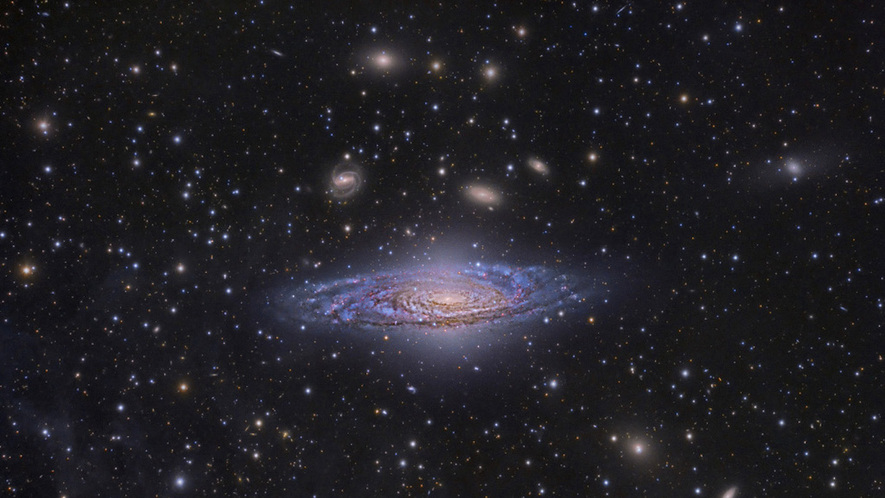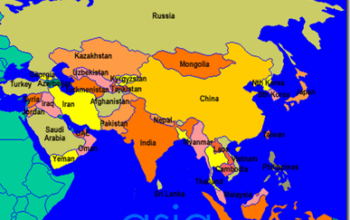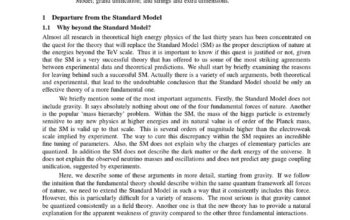The celestial tapestry beyond our solar system is a marvel that continues to captivate astronomers and physicists alike. One of the more intriguing aspects of this cosmic panorama is the weather phenomena associated with massive stars, or “big stars.” While our own planet experiences atmospheric storms, these distant behemoths showcase an array of celestial weather patterns that can be as complex as those found on Earth, albeit governed by different physical principles. Stellar weather encompasses a multitude of phenomena—including stellar winds, magnetic fields, and various eruptive activities—that present both challenges and opportunities for modern astrophysics.
First and foremost, it is essential to acknowledge the sheer scale and enormity of massive stars. Generally classified as those exceeding eight solar masses, these stars follow a distinct evolutionary path culminating in supernova explosions, which are the terminal breaths of their existence. The weather on these giants is typically characterized by an intense stellar wind, a stream of charged particles emitted from their surfaces. This wind can reach supersonic speeds—commonly between 1,000 and 3,000 kilometers per second—and can extend for several astronomical units, altering the interstellar medium’s composition in surrounding regions.
Among the most fascinating phenomena produced by massive stars is their influence on the surrounding environment through their stellar winds. As these winds collide with surrounding interstellar gas and dust, they create shock waves, resulting in what is aptly termed “stellar bow shocks.” Such interactions can cause significant heating and ionization of the interstellar material, giving rise to nebulae that are the birthplaces of new stars. In this sense, the weather of big stars is not merely an isolated event; instead, it becomes an integral component of galactic ecology, fostering new celestial formations in its wake.
In addition to stellar winds, one must consider the magnetic fields generated by these colossal stars. Massive stars are often characterized by rapid rotation, which contributes to the dynamo effect, leading to the generation of substantial magnetic fields. These magnetic fields can become turbulent and can influence the star’s own weather systems. Regions of varying magnetic intensity can result in the formation of coronal loops and prominences, which are analogous to solar flares observed on our Sun. When these magnetic field lines become twisted, they can lead to explosive releases of energy, resulting in large-scale ejections of plasma from the stellar surface.
Flare activity is another significant aspect of the weather observed in massive stars. These flares occur due to the reconnection of magnetic field lines in the star’s atmosphere, releasing copious amounts of energy in the form of electromagnetic radiation—ranging from radio waves to gamma rays. Such high-energy events have critical implications for our understanding of stellar physics and can serve as a concerning indicator of the star’s lifecycle and impending fate. The energetic output of these events can also have profound effects on nearby celestial bodies, potentially stripping away their atmospheres and altering their chemical compositions.
One cannot discuss stellar weather without mentioning the tumultuous periods when a massive star enters the red supergiant phase. As these stars exhaust their hydrogen fuel, they undergo significant changes in their internal structures which cause alterations to their stellar atmospheres. The expansion of a star’s outer layers leads to the development of pulsation modes, yielding rhythmic contractions and expansions in the star’s envelope. This variable behavior promotes the formation of dust clouds, which can condense into molecules. These molecular clouds may act as precursors to the formation of new stars and planets, thus showcasing another dimension of stellar weather that shapes the larger cosmic landscape.
Furthermore, the study of massive star weather encapsulates not only observational astronomy but also theoretical modeling. Astrophysicists utilize computational simulations to recreate and understand the dynamics at play in these massive celestial events. Such models help elucidate the interactions of stellar winds with the interstellar medium, the behavior of magnetic fields, and even the intricacies of radiation transfer in the stellar atmospheres. Achieving a comprehensive understanding of these systems necessitates a multidisciplinary approach involving concepts from thermodynamics, magnetohydrodynamics, and radiative transfer theory.
Additionally, the emerging field of astrobiology may also find relevance in studying the weather of massive stars. The effects of stellar flares and winds on potential exoplanets orbiting these stars could influence the viability of those planets to support life. The energetic output from a massive star’s weather patterns could either render the vicinity inhospitable or, conversely, serve as a catalyst for enhancing chemical pathways conducive to life. Such an interplay necessitates a more nuanced understanding of how stellar weather might influence the habitability of worlds orbiting these enormities.
As humanity stands at the precipice of exploring the cosmos, the significance of understanding big stars and their meteorological phenomena cannot be understated. The intricate interplay between stellar behavior, magnetic fields, and cosmic evolution epitomizes the vastness of physics at play in our universe. Continued research into the weather of these astronomical giants not only enriches our comprehension of stellar life cycles but also underscores the interconnectedness of cosmic entities across the expanse of space and time.
In conclusion, the weather of big stars is a captivating spectacle that embodies the complexity and dynamism of our universe. Through advancements in observational techniques and theoretical modeling, astronomers can continue to unveil the mysteries surrounding these colossal stellar phenomena. As research progresses, our understanding of their influence on galactic ecology, stellar evolution, and even the potential for life beyond Earth will broaden, thereby enhancing the human quest for knowledge in the endless wilderness of space.












